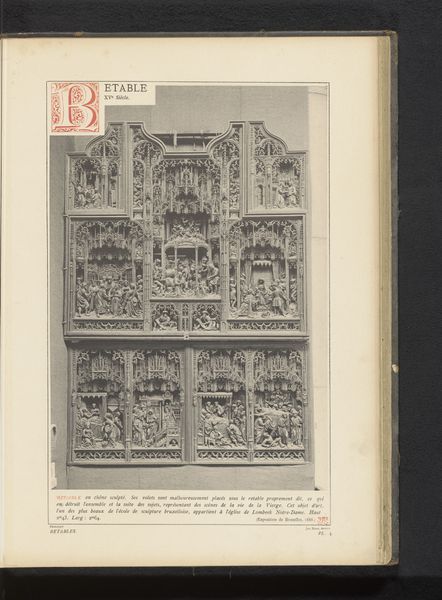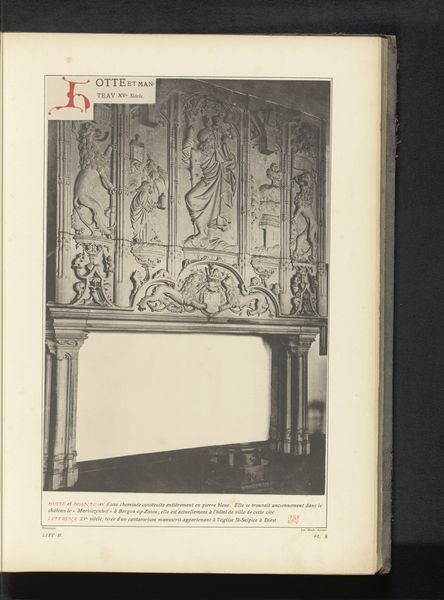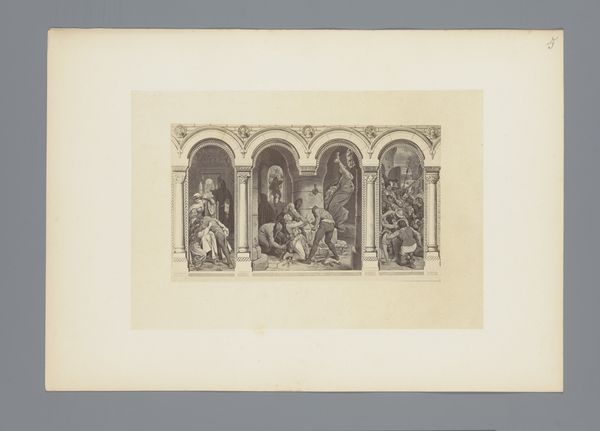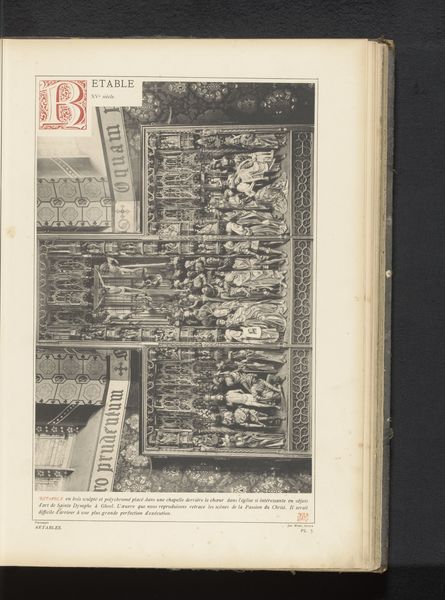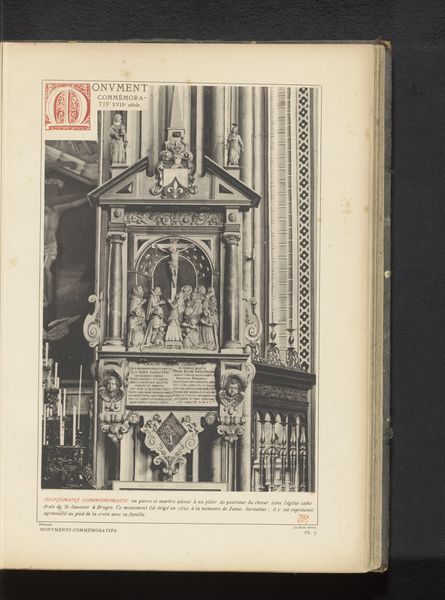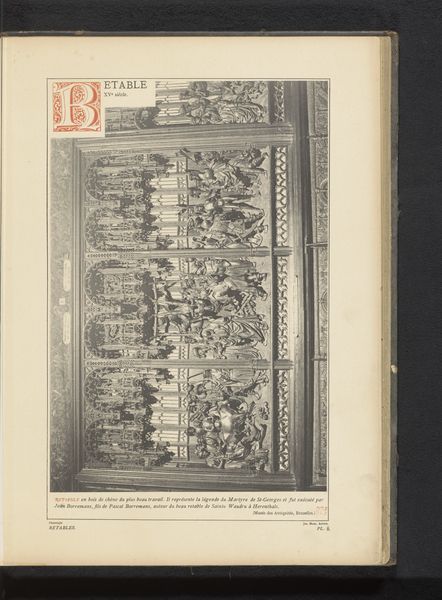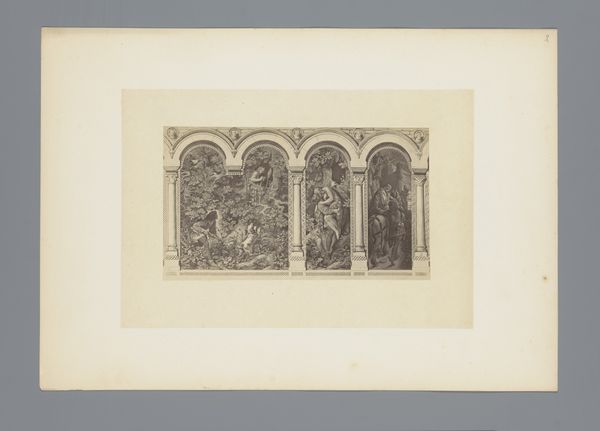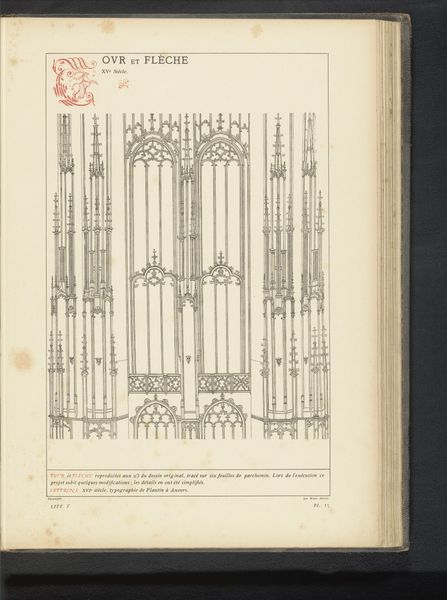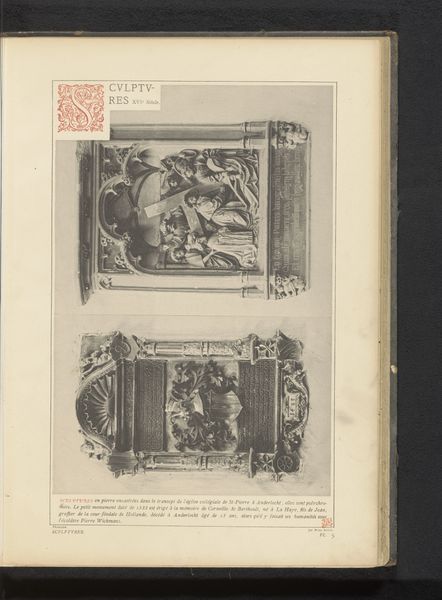
#
aged paper
#
toned paper
#
homemade paper
#
paper non-digital material
#
paperlike
#
sketch book
#
personal sketchbook
#
letter paper
#
paper medium
#
historical font
Dimensions: height 344 mm, width 238 mm
Copyright: Rijks Museum: Open Domain
Curator: Take a moment with "Gedecoreerd altaarstuk," a reproduction dating from before 1881. We don’t know who created this image, but it depicts an elaborate altarpiece. Editor: My immediate sense is of immense detail rendered with exquisite care. There is an undeniable formality to the presentation, even in this small-scale format. It feels very self-contained. Curator: The image calls to mind altarpieces in the late medieval and early Renaissance style, triptychs overflowing with figures enacting moments from the life of Christ. Editor: Notice how the eye is drawn to the central panel—the most populated area of the composition, acting as a focal point, literally framed and elevated, in terms of tonal and figural contrast. Curator: Altarpieces often served as visual sermons, communicating biblical stories to a largely illiterate population, relying on gestures, symbols, and facial expressions to convey emotional and spiritual truths. Consider the downcast eyes and the supplicating hands. Editor: It’s interesting how the aged paper affects our perception. The toning creates a subdued palette that enhances the feeling of reverence; it also emphasizes the linear qualities and the elaborate carving details represented in the original sculpture. Curator: Indeed. And the presence of text on the page—the word "ETABLE" so prominently placed, almost like a title card, makes me wonder about the original function. Perhaps a plate from a larger study of ecclesiastical objects? Editor: The texture of the paper adds to that impression, giving the whole image a sense of weightiness beyond just historical gravitas. It feels almost archival, doesn’t it? Curator: Absolutely, carrying its own history. The way in which past cultural traditions embed themselves in imagery, even in copies, is so telling of our collective memory. Editor: Yes, tracing those echoes in form and symbol lets us reconsider how art is built—how the eye deciphers patterns, how meaning is made through deliberate repetition. This feels like a miniature universe unto itself. Curator: Exactly, and the act of contemplating this replica can open up an array of connections to bigger ideas about the artwork that it tries to capture and the period. Editor: Yes, art begets art. A curious reminder of how visual culture grows on itself, creating these beautiful and strange aesthetic ecosystems.
Comments
No comments
Be the first to comment and join the conversation on the ultimate creative platform.

